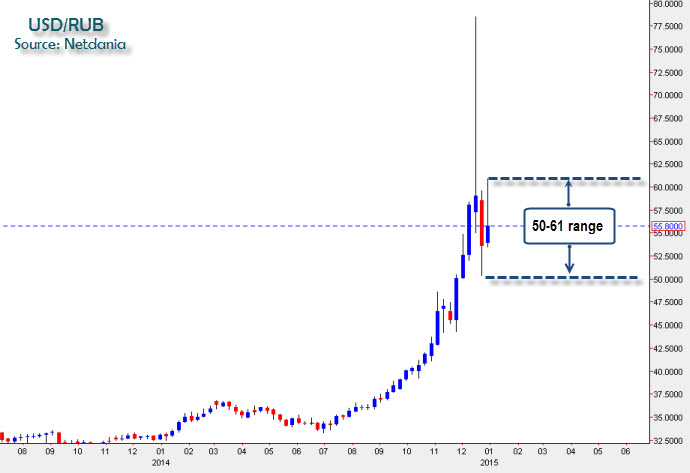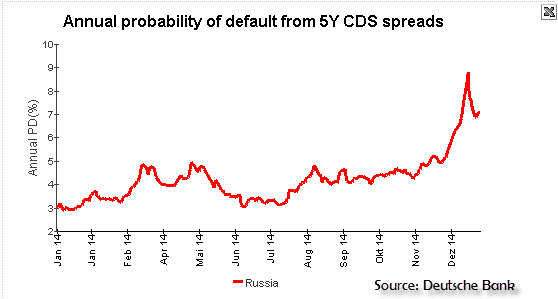It has been a year of volatility and of a great deal of local and external challenges for the country to remain on a macroeconomic sweet spot but in the end, the bulls still prevailed over the bears.
For the sixth straight year, the local stock barometer ended on a higher note, rising by more than 22 percent. After slipping into bear territory in 2013 following the US Federal Reserve’s announcement of the tapering of its monetary stimulus, the Philippine Stock Exchange index (PSEi) bounced back into the realm of the bulls this year.
For 2015, the PSEi will likely continue its ascent to the range of 7,500 to 8,000, according to Jonathan Ravelas, chief strategist at the country’s largest lender, Banco de Oro Unibank.
Ravelas’ forecast is based on a price-to-earnings (P/E) ratio of between 18x and 20x as corporate earnings growth accelerate to at least 15 percent.
By the end of 2015, he sees the PSEi closing at 7,800, suggesting an upside of more than 500 points or at least 7 percent over this year’s level.
“While higher interest rates do not bode well for the equities market as these would translate to higher financing costs and lower profits, BDO believes the [rate hikes] may have already been factored in by the market. The country’s strong fundamentals and healthy corporate earnings will continue to support the local bourse and will catch up with its high valuations,” Ravelas said.
A P/E ratio of 18x and 20x means investors are willing to buy shares at 18 to 20 times likely earnings for 2015.
“Moving forward, the Philippine economy is seen to post a sustainable and stable growth rate of 6 to 7 percent supported by investments in infrastructure, human capital and the continued pursuit of good governance,” Ravelas said.
“While geopolitical risks, elevated inflationary pressures and higher interest rates threaten the country’s growth story, the Philippines’ sound fundamentals should allow the country to weather these adversities,” he added.
Local stock brokerage AB Capital Securities Corp. also remains bullish for 2015 even as it is expecting further volatility given the uncertainty in the global environment. AB Capital’s index target for 2015 is 7,700 based on an assumed P/E ratio of 18.9x and price to book ratio of 2.76x, which it noted was near the three-year average.
After the unwinding of the US Fed’s monetary stimulus via aggressive bond-buying activities, global markets are now guessing how soon the US central bank will raise interest rates. Recently, global markets have turned jittery over the collapse in global oil prices.
“For the Philippines, falling oil prices is economically beneficial as our country is a net energy importer with minimal production of oil, natural gas and coal,” AB Capital said.
It noted that in 2013, the country imported 270,000 barrels per day of crude oil (about 90 percent of the total consumption), with 35 percent of the imports coming from Saudi Arabia and Russia. Nevertheless, it said oil prices would likely recover in the second half of 2015.
On external developments, AB Capital expects the US Fed to hike interest rates later than expected, most likely in the fourth quarter of 2015. It also sees a potential contraction in the Russian economy affecting the eurozone trading partners, which in turn may put equities at risk with the possible shift from emerging to developed markets.
While the US is done with its monetary stimulus, Japan is seen to continue boosting liquidity through its own stimulus program, AB Capital said.
In the meantime, AB Capital also warned of heightened domestic regulatory risks in 2015.
Key drivers
For First Metro Investment Corp., PSEi earnings can grow by 11 to 12 percent this 2015 alongside stronger economic growth. Key drivers seen for the new year are government spending and pre-election spending.
But FMIC said a P/E ratio of above 20x would be “unsustainable” unless robust flows tolerate such higher P/Es longer than so far assumed.
“Foreign flows will continue to be driven by developed markets’ central banks and how their policy actions will play in the bond and currency markets,” FMIC said in the December issue of “The Market Call,” a joint publication with the University of Asia & the Pacific.
FMIC noted that the key risks for 2015 would be a power crisis, political noises, US interest rate hike, fund outflows, slower growth in emerging market economies and natural disasters.
Favored sectors
For 2015, FMIC favors the consumer, gaming, power generation sectors and conglomerates with infrastructure exposure.
In the case of consumer stocks, FMIC sees the low-inflation environment and lower oil prices boosting disposable income. “Retailers should be the biggest beneficiary—especially when the port congestion is fully resolved. Early election-related spending which starts in the second half 2015 should provide an additional boost,” FMIC said.
For gaming, the recent opening of integrated resort City of Dreams Manila will likely excite the market, FMIC said. Major concerns, however, include gaining a critical mass to support this market, how fast the mass market will grow given the tighter competition and how resilient the VIP (very important person) or high-roller market will be once Macau’s new casinos open by mid-2015, FMIC said.
On power generation, high energy demand (due pre-election activities and the roll out of infra projects) and higher energy prices given tighter supply conditions (El Niño to limit hydro power generation, 30-day maintenance shutdown of Malampaya).
FMIC also favors conglomerates with infrastructure exposure, anticipating that public infrastructure spending would bounce back from the dismal performance this year. “Also, with the President’s term nearing its end, we should expect its key PPP (public-private partnership) program to be rolled out faster,” it said.
AB Capital, for its part, is bullish on the consumer and power generation sectors. For the consumer sector, the brokerage said that with inflation expected to remain subdued and interest hike delayed, consumer spending on non-oil related items would pick up. At the same time, it noted that the economic integration of Association of Southeast Asian Nations (Asean) starting 2015 would allow free movement of goods and services in the region.
“We see most consumer stocks as fairly priced given current price levels. Despite this, we remain bullish on the sector and advise investors to accumulate positions during price dips,” it said.
AB Capital is bullish on the power sector given the expected tightness in power supply particularly during the second quarter of 2015.
AB Capital has a neutral outlook on banking, property and gaming stocks.
For BDO, Ravelas said favored sectors would be the following:
banking, on the back of sustained loan growth and margin improvements
power, which is seen to benefit from the expected power shortage
construction, which is seen to benefit from the government’s infrastructure spending and the continued growth of the real estate sector food and beverage, demand for which will be boosted by high overseas Filipino worker remittances and the robust business process outsourcing industry
Strong first semester
Possible support for the PSEi next year would be at the 6,250-6,500 levels, equivalent to a P/E ratio of 15x to 16x, Ravelas said.
“The first half of the year is seen to be a period of strength with the index likely to test the 8,000 levels buoyed by stronger first quarter 2015 GDP growth and inflation further slowing to 3.1 percent in January,” Ravelas said.
For the first quarter of 2015, BDO is looking at a 7.5 to 8 percent growth rate.
“2015 will also be a good foreign exchange play, as the expected depreciation in peso would benefit dollar-revenue generating companies such as those in the mining, electronics and oil sectors,” he said.
To subscribe to the Philippine Daily Inquirer newspaper in the Philippines, call +63 2 896-6000 for Metro Manila and Metro Cebu or email your subscription request here.
Factual errors? Contact the Philippine Daily Inquirer's day desk. Believe this article violates journalistic ethics? Contact the Inquirer's Reader's Advocate. Or write The Readers' Advocate:
c/o Philippine Daily Inquirer Chino Roces Avenue corner Yague and Mascardo Streets, Makati City,Metro Manila, Philippines Or fax nos. +63 2 8974793 to 94



















